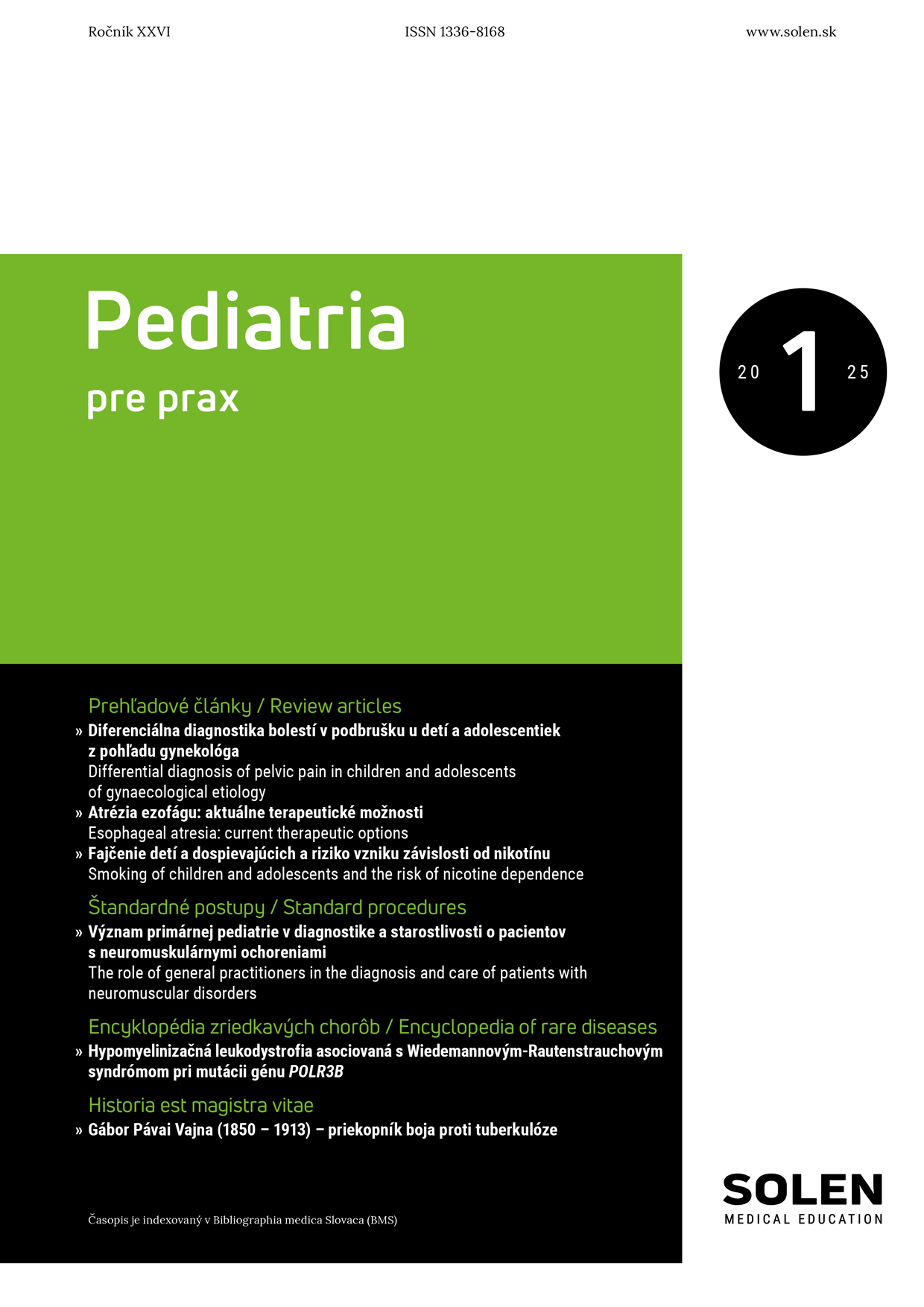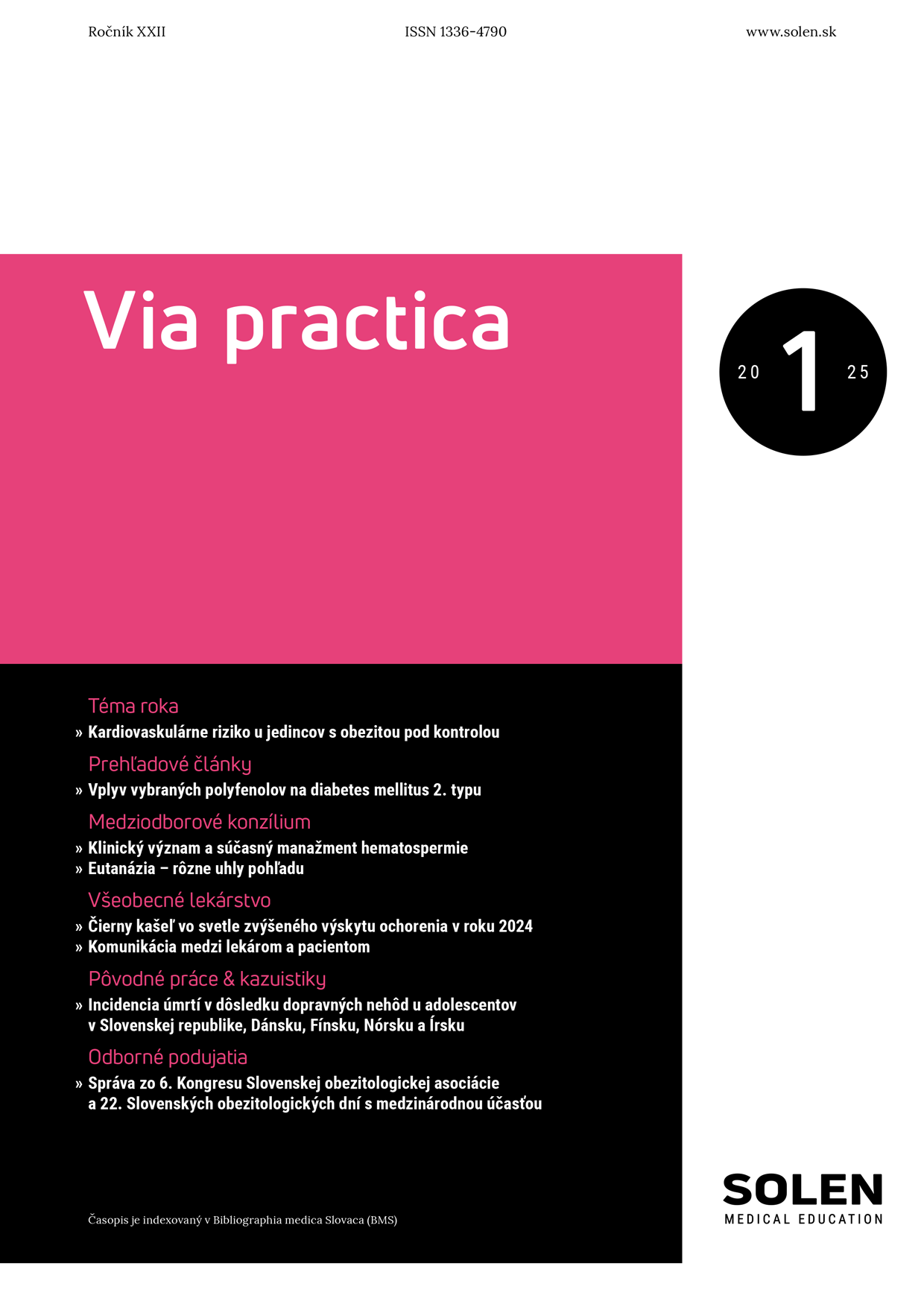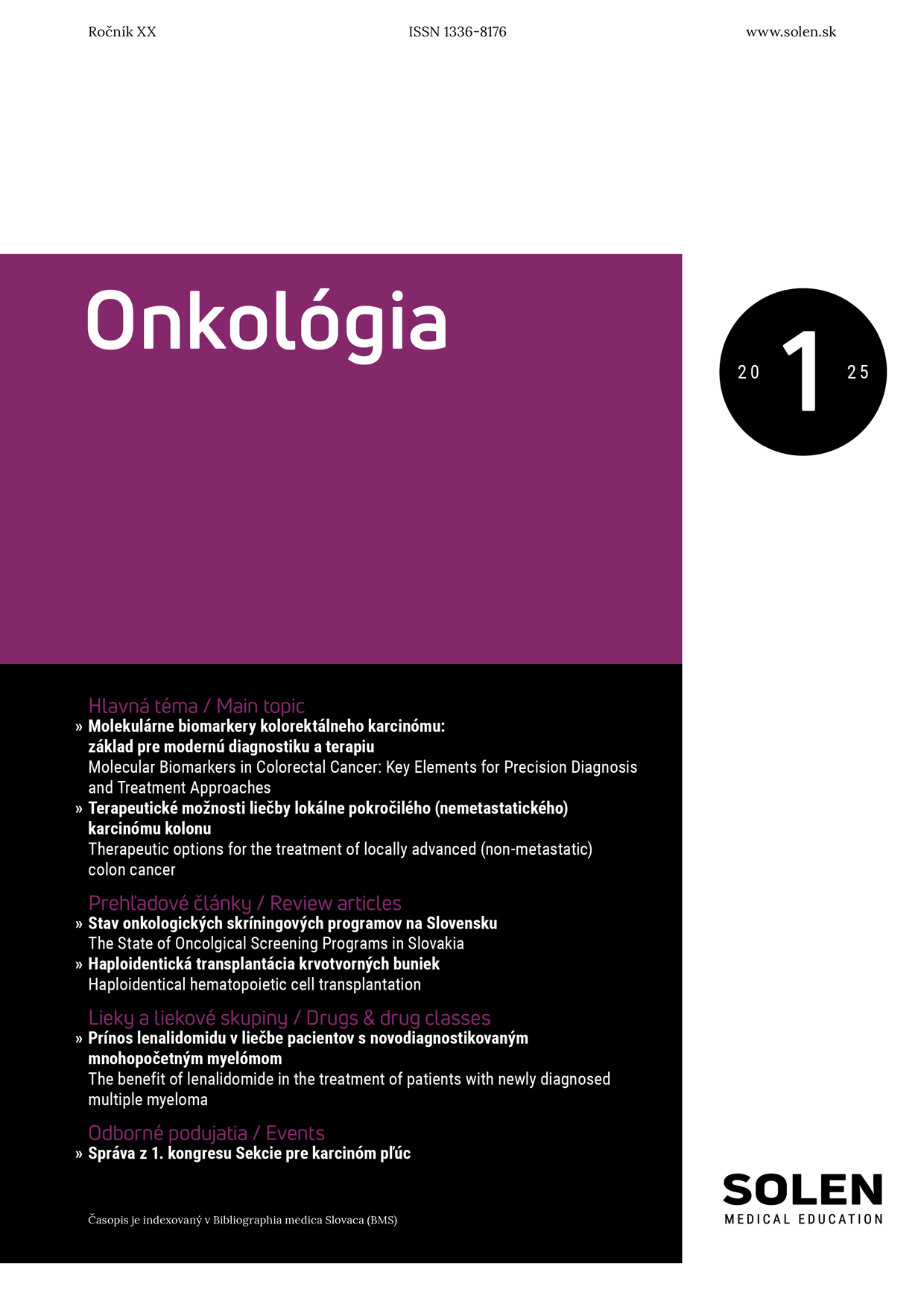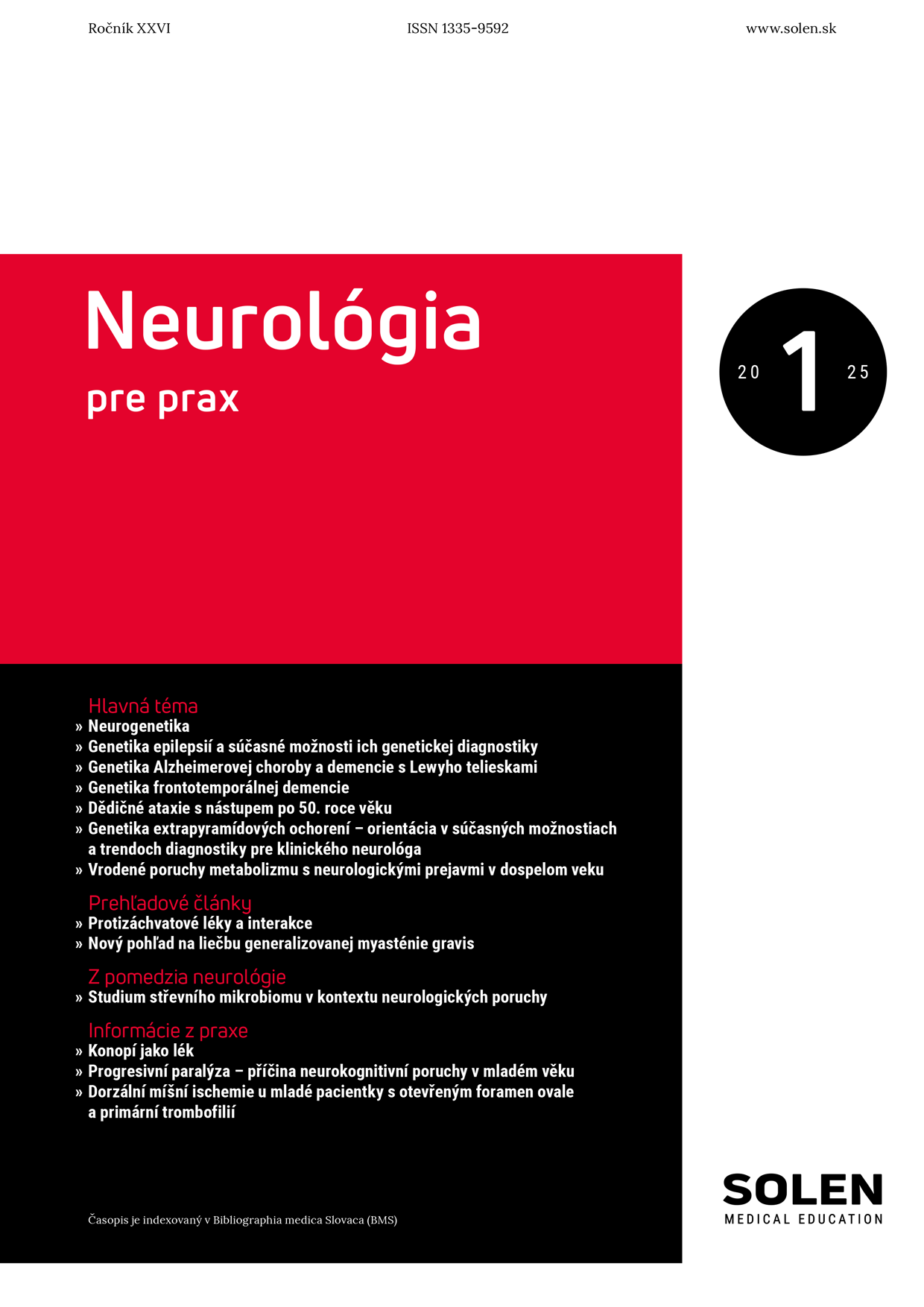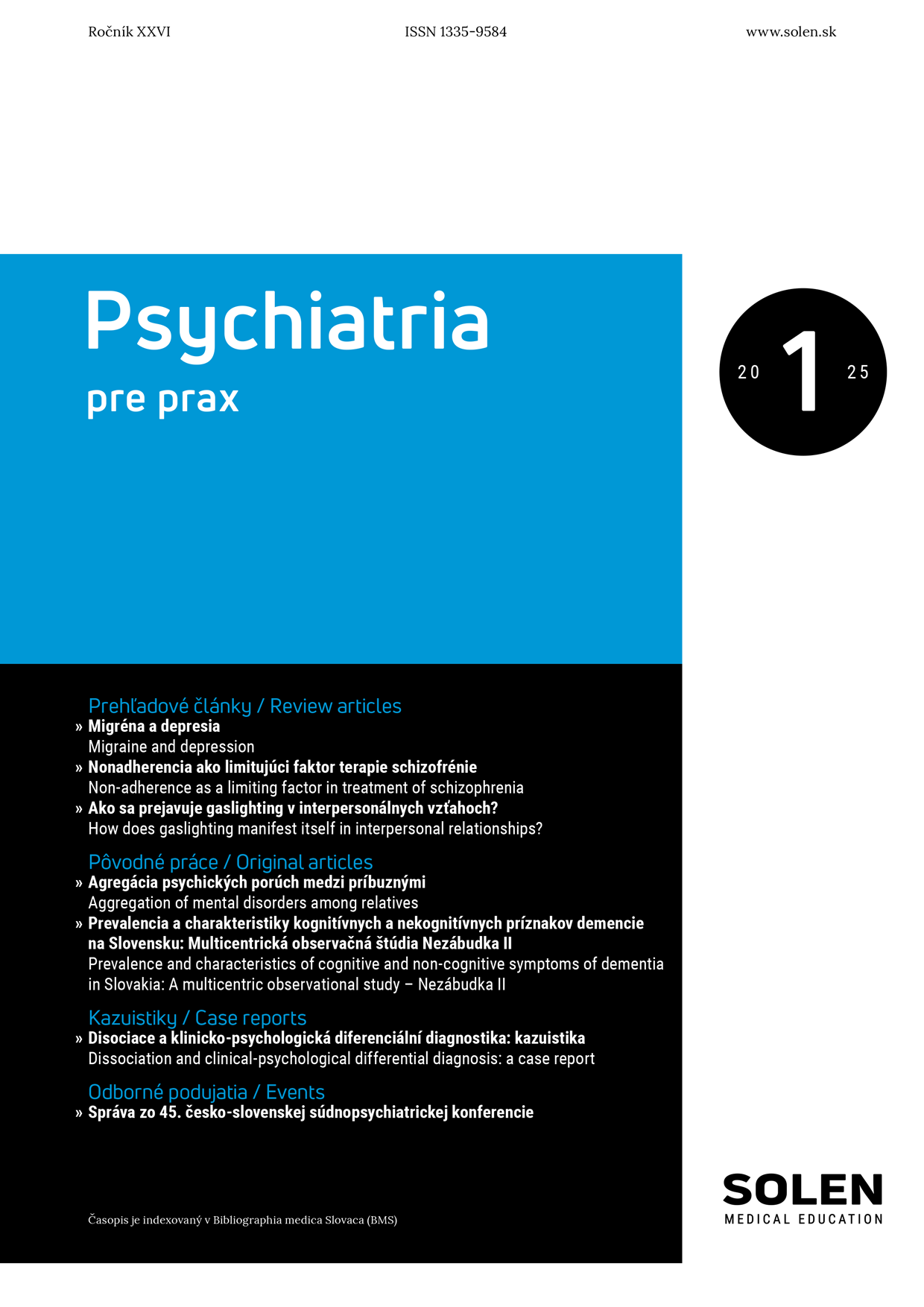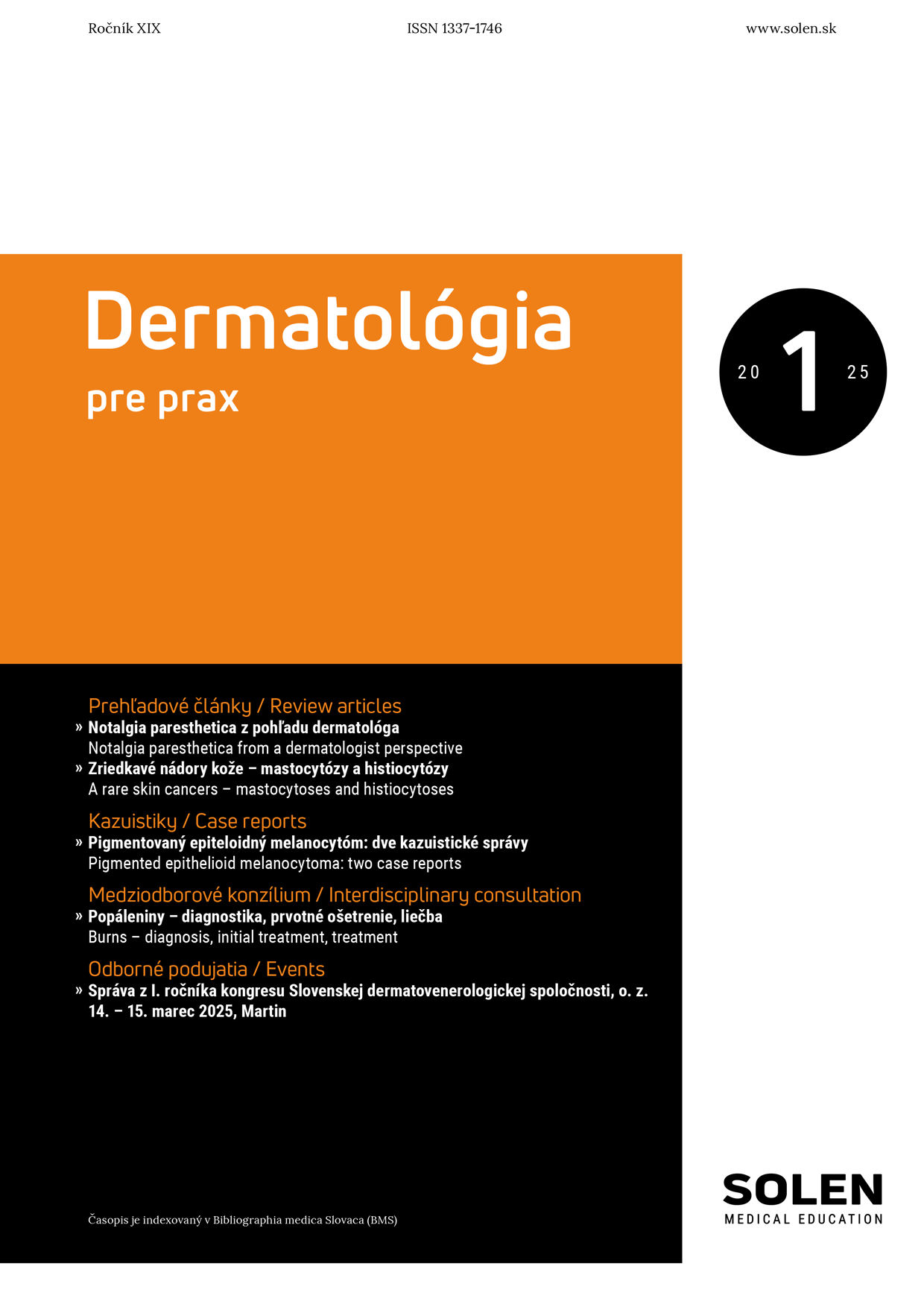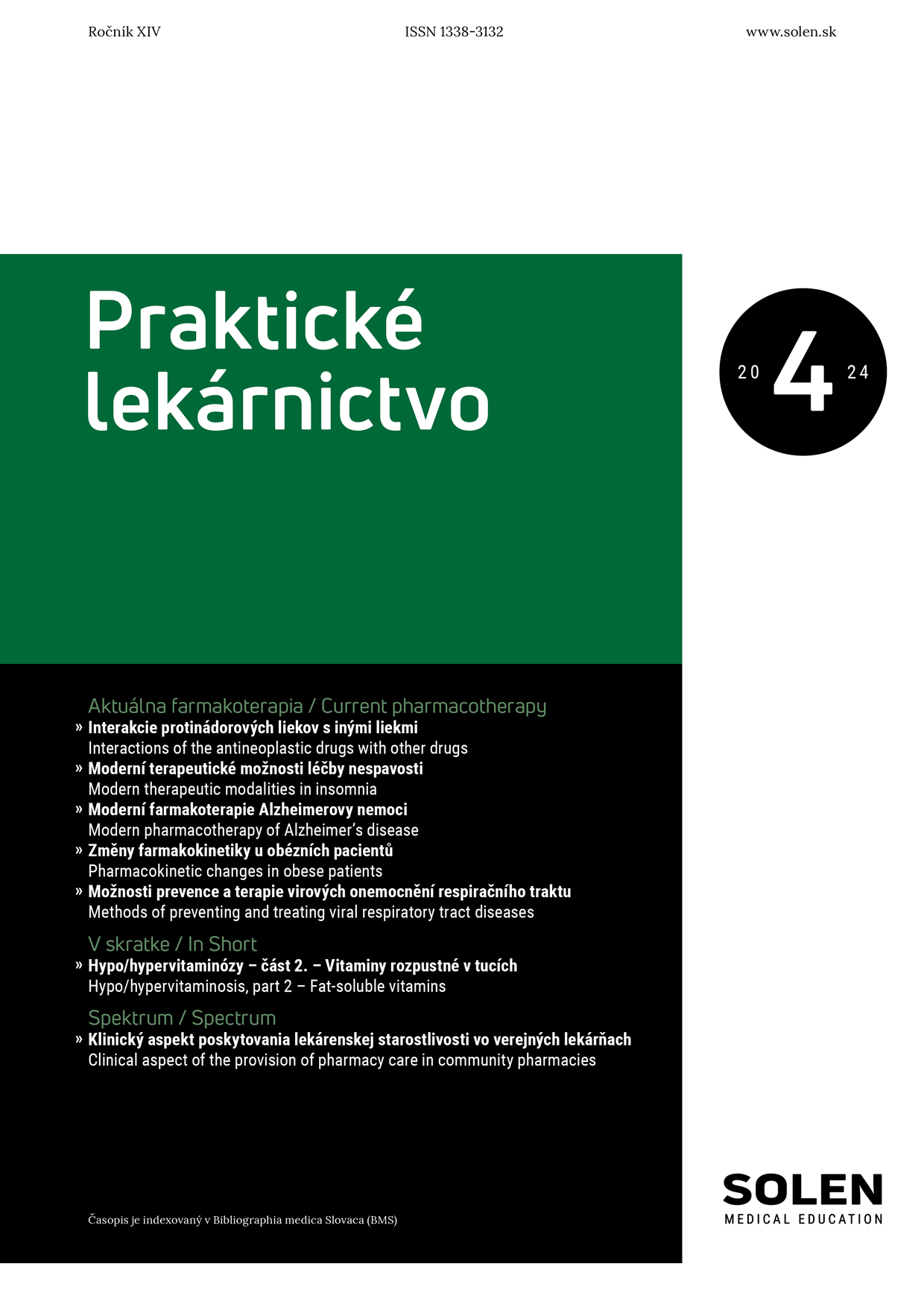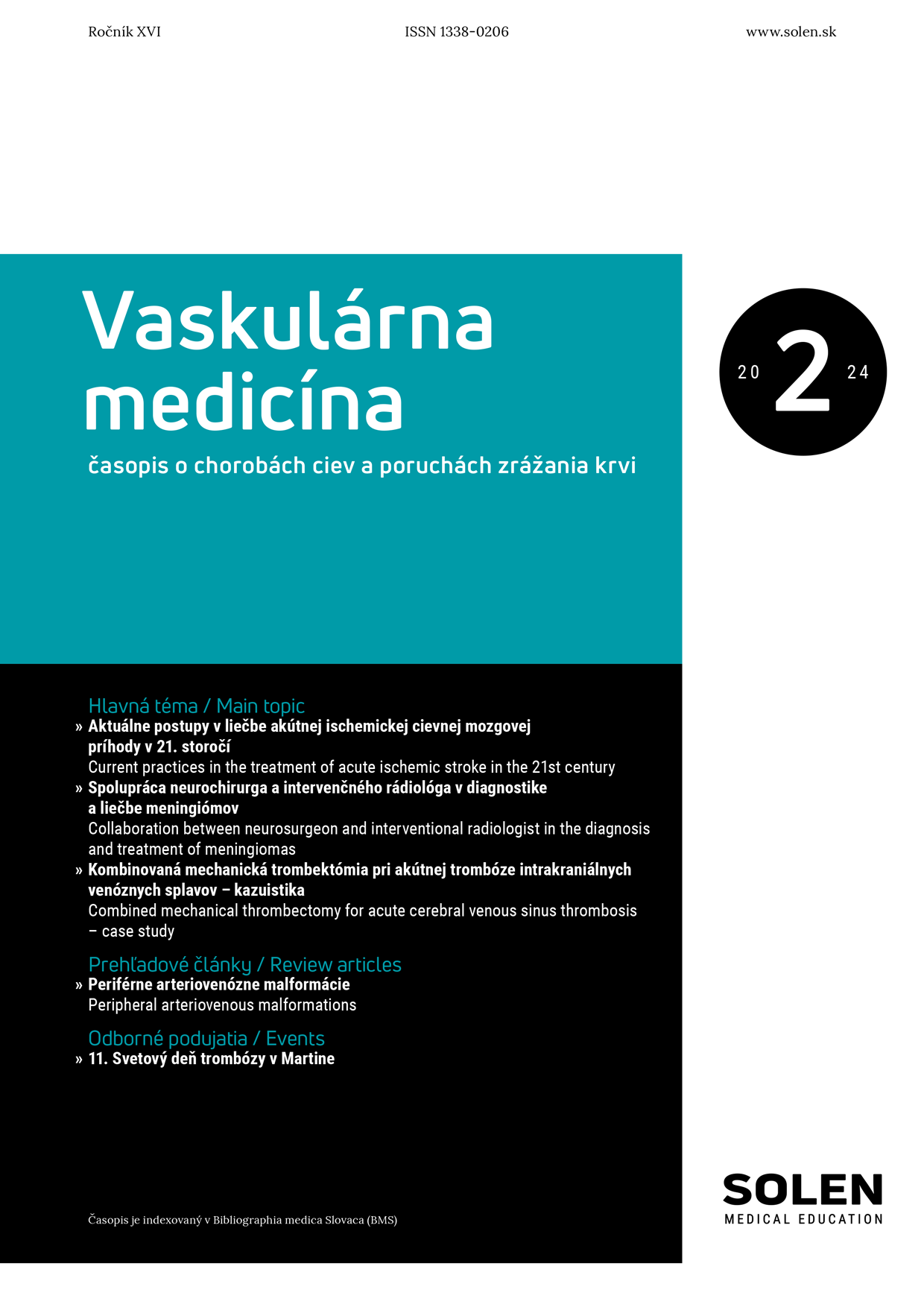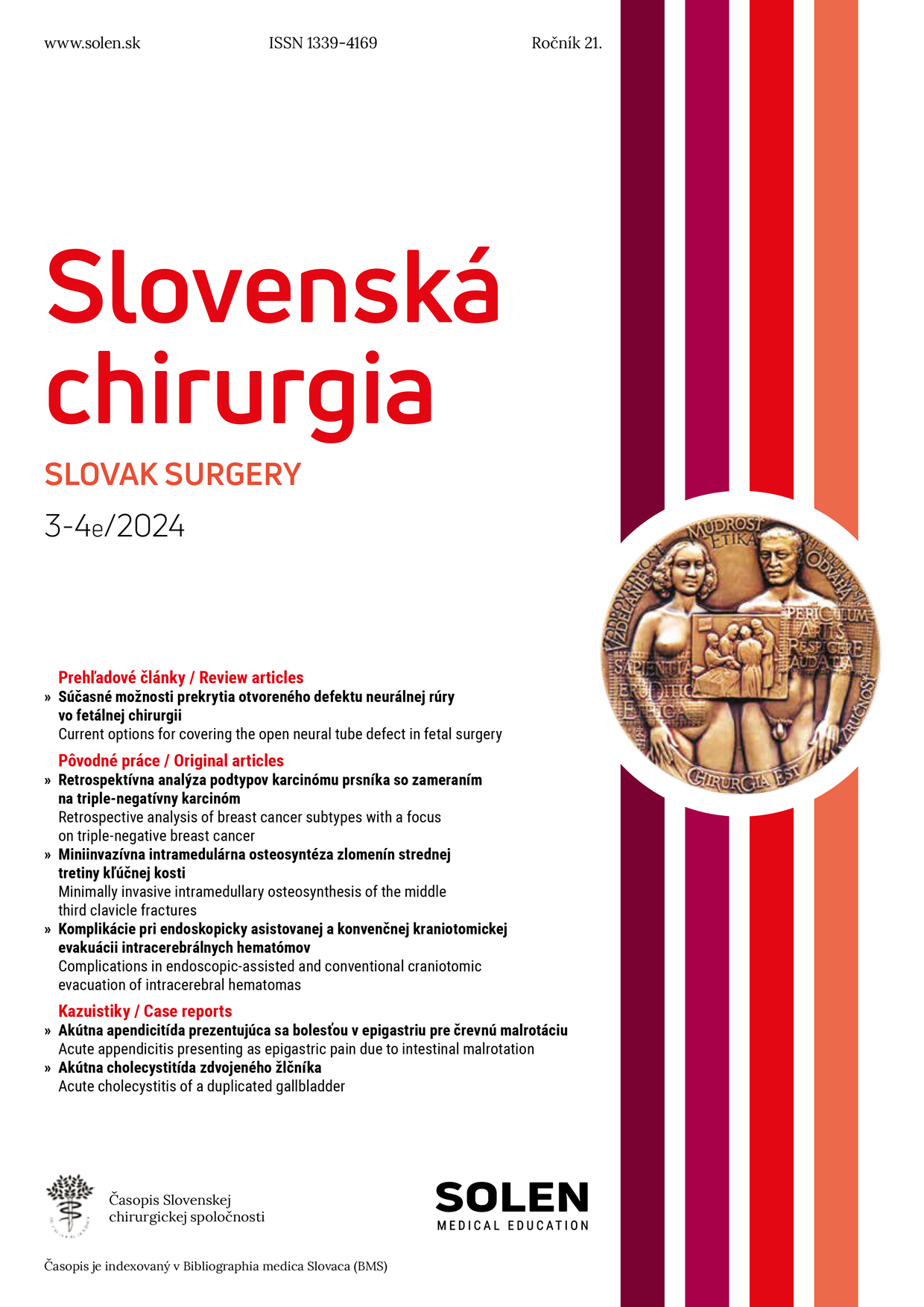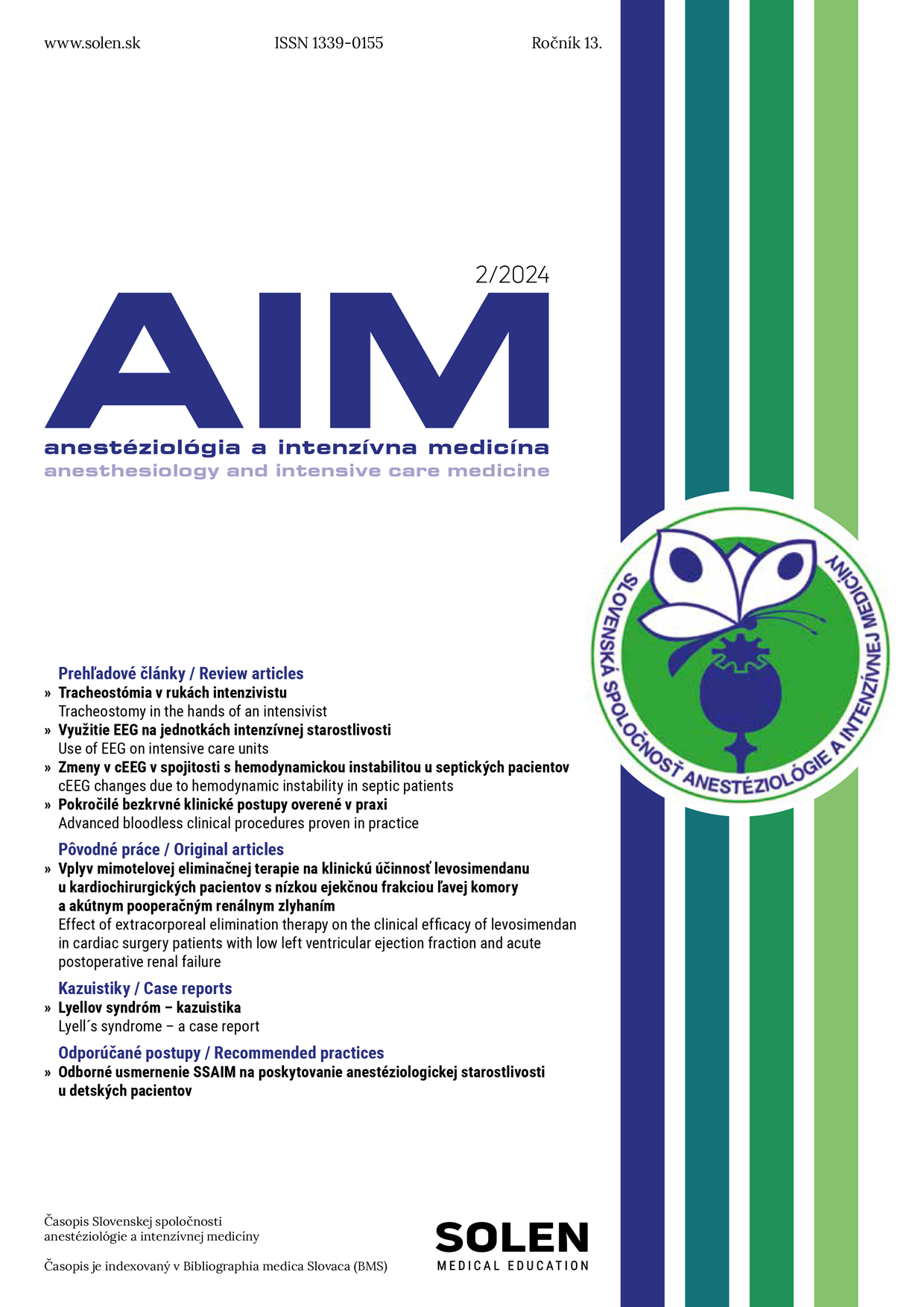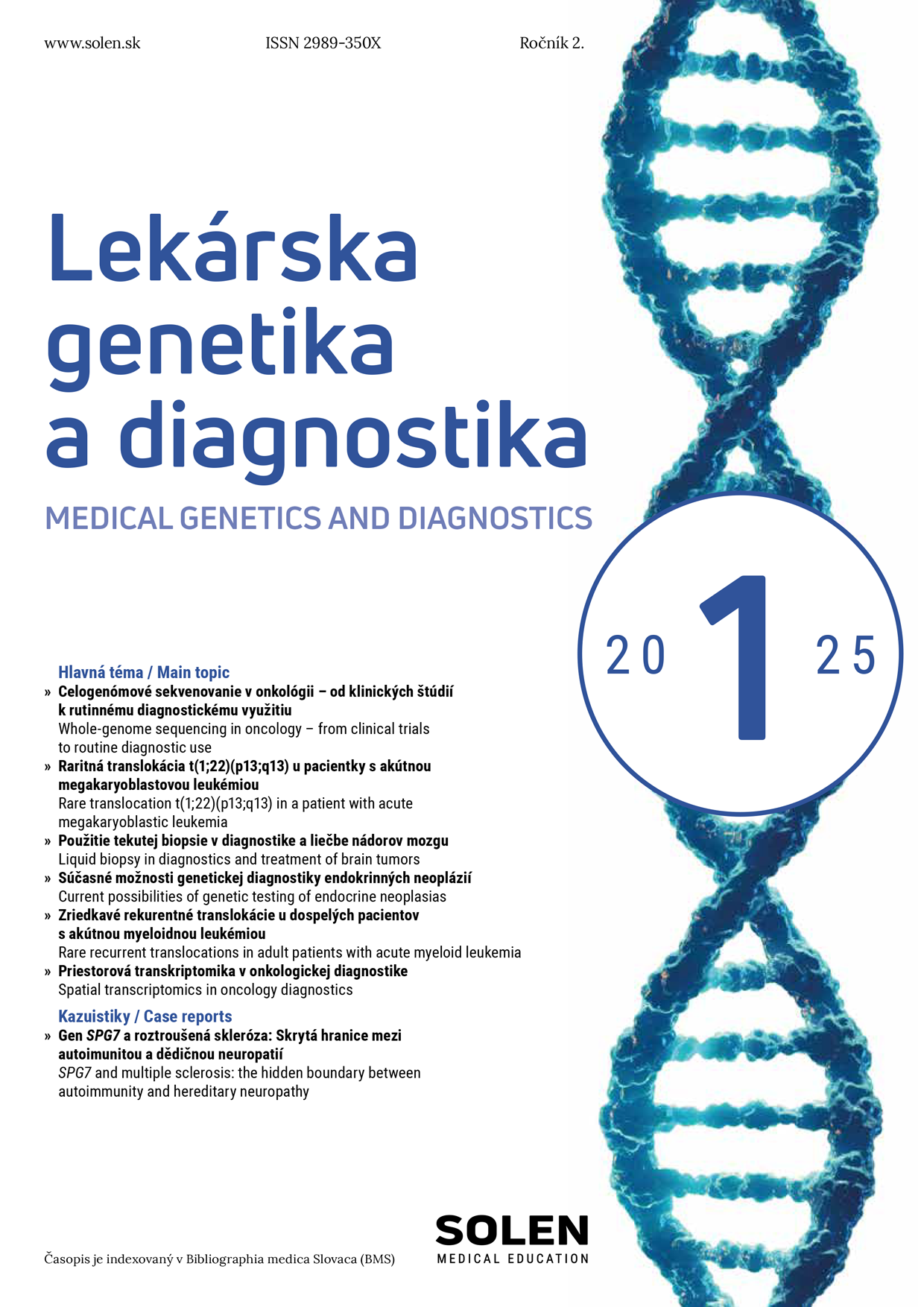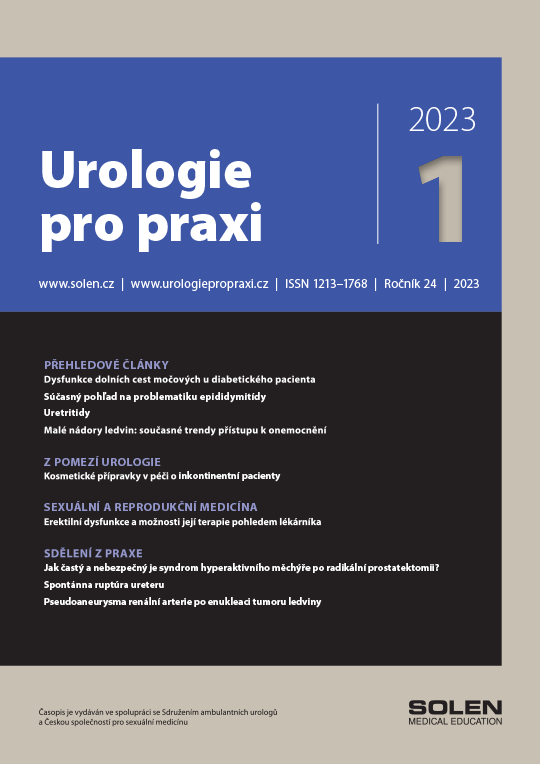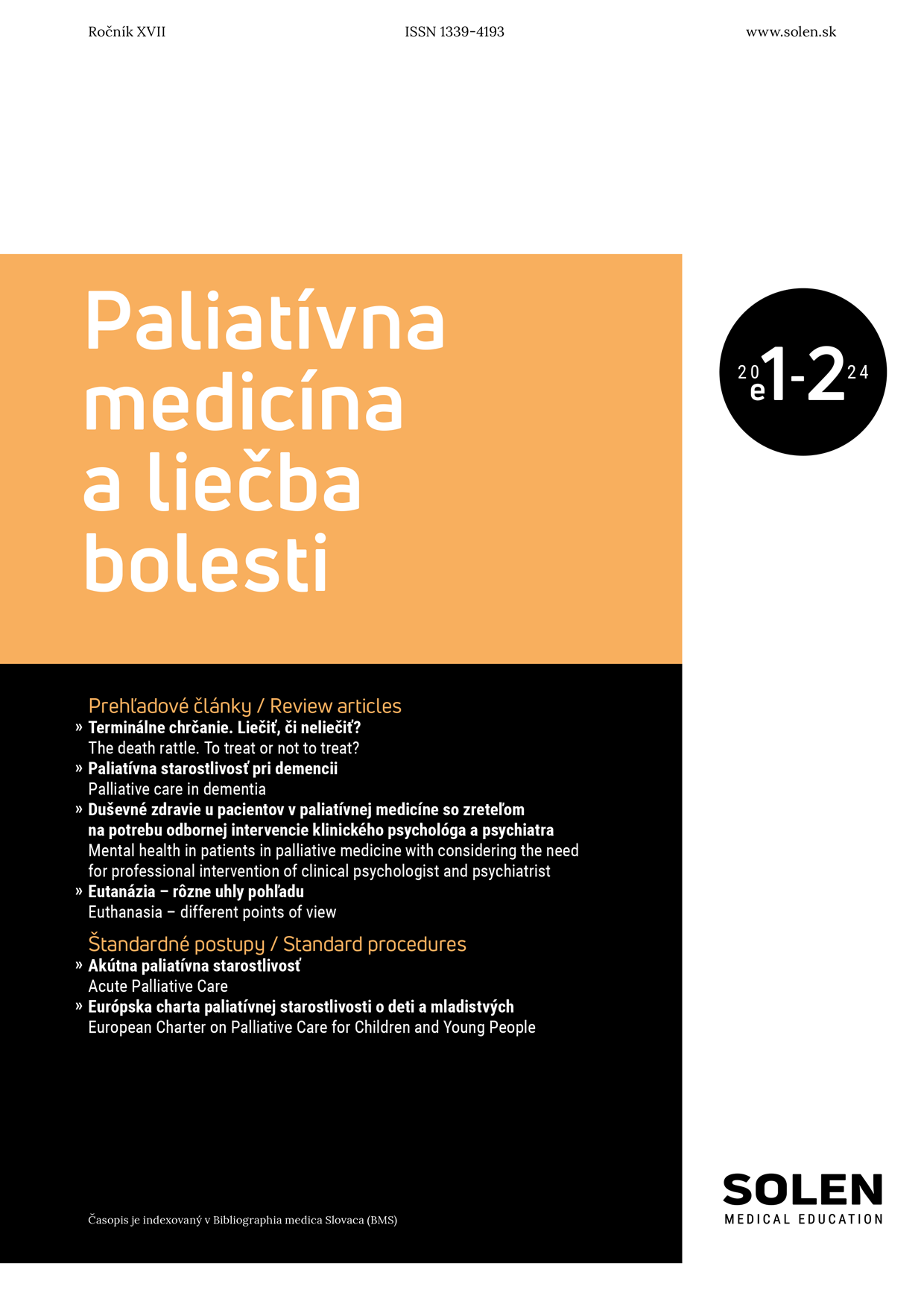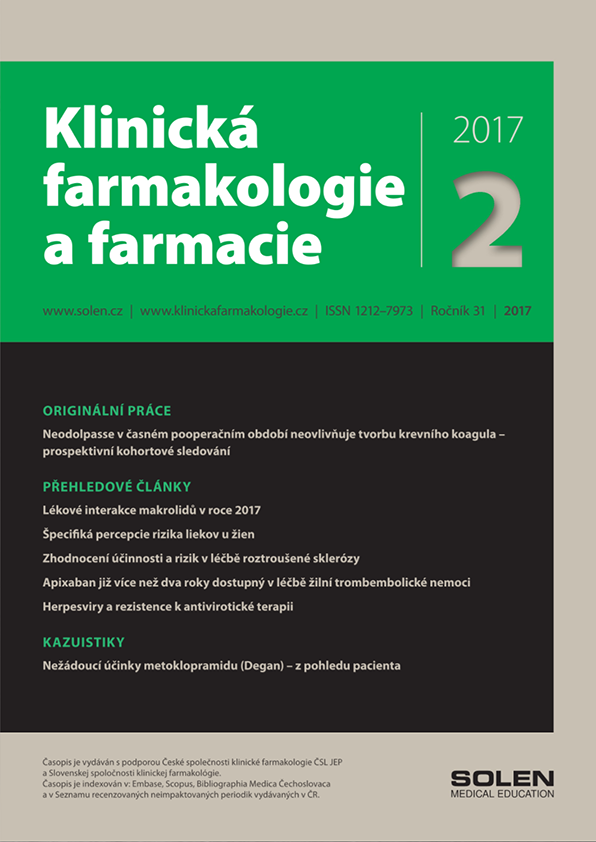Manuscript must be submitted in electronic format via email to: dubravcikova@solen.sk and redakcia@solen.sk. Submission of a printed manuscript is not required.
The Editorial team reserves the right to make minor stylistic adjustments to the text without consulting the author, who will be informed during the proofreading process. The editorial team also reserves the right to reject texts that do not align with the journal's concept or have not been approved through the peer review process. If necessary, the author's consent will be sought to shorten the manuscript. In case of any formal deficiencies, the manuscript will be returned to the author for revision.
The editors team reserve the right to self-manage the inclusion of unsolicited manuscripts that have passed the peer review process.
Given the journal's practical focus, manuscripts should be written in a clear manner, emphasizing the practical application of the provided information in clinical practice.
Authors and co-authors are required to familiarize themselves with the rules of publication ethics, available in full on the journal's website. When submitting an article for publication, the main author must send a written declaration to the editorial office stating that the entire authorial collective is aware of the publication ethics rules and that there are no impediments to publishing the article.
Legal relationships between the publisher and the author are governed by the provisions of the Copyright Act.
Review Articles – Up to 9 pages. Latest insights into etiology, pathogenesis, diagnosis, and therapy of diseases and groups of diseases. Please avoid general and theoretical information. Figures and tables (up to 6) can be included with the text. In case of extensive topics, the article can be divided into multiple parts upon agreement with the editorial board. Please emphasize the practical application of the article for surgeons and specialists from other fields interested in surgery.
Original Papers – Up to 6 pages. Studies, specific treatment procedures, own observations. Structure: objectives, materials and methods, results, discussion, conclusion.
Case Reports – Up to 4 pages. Structure: summary (abstract), introduction, case, discussion, conclusion.
Interdisciplinary Consultation – Up to 6 pages. Interdisciplinary discussion on a specific diagnosis or therapeutic procedure involving experts from different fields, principles, and questions of their cooperation.
Information/Comments – Reactions to review articles, interesting and valuable information from foreign literature published in accordance with EBM, information about professional events, reviews, conference reports, and more.
* Articles undergo professional peer review and language editing.
* Articles and reviews are not remunerated.
* Articles are provided for inspection to advertising partners.
Contributions must be submitted in electronic format via email to the editorial office: dubravcikova@solen.sk or redakcia@solen.sk. Submission of manuscripts in printed form is not required. The editorial board reserves the right to make minor stylistic edits to the text without consulting the author, who will be informed during the correction phase. The editorial board also reserves the right to reject articles that do not fit the concept of the journal or have not been approved by professional peer review. If necessary, the author's consent will be obtained for shortening the manuscript. Manuscripts with formal shortcomings will be returned to the author for revision.
The editorial board reserves the right to manage the inclusion of unsolicited manuscripts that have undergone peer review. Due to the practical focus of the journal, we kindly ask that the contribution be written in a clear manner, with an emphasis on the practical application of the information provided in clinical practice.
Both the author and co-authors are obliged to familiarize themselves with the rules of publication ethics, which are fully accessible on the journal's website. When submitting the article for publication, the main author is required to send a written statement to the editorial office, stating that the entire author's team is aware of the rules of publication ethics and that there are no real obstacles to publishing the article.
Legal relationships between the publisher and the author are governed by the provisions of the Copyright Act.
- Title of the work in Slovak and English - concise, up to 10 words, capturing the essence of the article.
- Name of the main author with titles, the name, and complete address of the workplace.
- Email and phone contact of the main author.
- Names of co-authors with titles and their workplaces.
Brief and concise summary of the submitted work in Slovak and English language, along with approximately 5 key words in both languages.
In original papers, the summary should be divided into the following sections: Objective/Introduction, Material and Methods or Patient Group and Methods, Results, Conclusion.
The English summary should be structured and adapted to the nature of the article in the same way as in the Slovak language: Purpose; Materials and methods or Patients and methods; Results; Conclusion.
In Case reports, the summary should be divided into the following sections: Objective / Introduction, Case, Conclusion.
The English summary follows the same structure and adaptation to the nature of the article as in the Slovak language: Purpose; Case; Conclusion.
Text, tables or graphs and images should be submitted as separate attachments in the highest possible quality, with precise captions (maximum of 5 tables and 5 images, clearly indicated in the text).
- List of cited literature, with a maximum of 20 citations, presented and numbered chronologically in the text.
Priority will be given to submissions that cite and refer to articles published in the journal Slovak Surgery.
In the text, use numerals in round brackets to indicate bibliographic references in the order they are first mentioned (not alphabetically). Subsequent references to the same source should be marked with the same number as the first mention.
In the list of references at the end of the text, provide the names of up to 3 authors. For works with more than 3 authors, list the first 3 authors, followed by the abbreviation "et al."
When citing authors in the text (e.g., Culine et al. compared...), consistently use the abbreviation et al. throughout the entire text and in the list of references. Additionally, include a reference to the list of references after the cited author's name (e.g., Culine et al. (15) compared...).
Avoid referencing abstracts, unpublished observations, and personal communications. Give preference to recent citations (from the last 3 years).
Formatting of bibliographic references should follow the citation style used in MEDLINE/PUBMED databases.
Examples of Citing a Monograph
1. Prochotský A. Karcinóm hrubého čreva a konečníka. Bratislava, Slovakia: Litera Medica; 2006.
2. DeVita VT Jr, Lawrence TS, Rosenberg SA, et al. CANCER. Principles & Practice of Oncology. 9th ed. Philadelphia, PA: Lippincott Williams & Wilkins; 2011.
** Examples of Citing a Chapter in a Book or a Contribution in a Conference Proceedings**
1. Nenutil R. Standardizace histopatologické diagnostiky kolorektálního karcinomu. In: Vyzula R, Žaloudík J, eds. Rakovina tlustého střeva a konečníku. Praha, Czech Republic: Maxdorf; 2007:96-102.
2. Enzinger FM, Weiss SW. Ischemic fasciitis (Atypical decubital fibroplasia). In: Sharon WW, John RG, eds. Soft Tissue Tumors. 4th ed. St. Louis, MO: Mosby; 2001:276-278.
** Examples for Citing an Article in a Journal**
1. Huťan M, Koudelka P, Bartko CH, et al. Nové odporúčania antibiotickej liečby infekcií diabetickej nohy. Slov. chir. 2012;9(3):88-91.
2. Jakimowicz J, Fingerhut A. Simulation in surgery. Br J Surg. 2009;96(6):563-564.
Example of Citing an Electronic Article
1. Wong KP, Lang BH. The role of prophylactic central neck dissection in differentiaded thyroid carcinoma: Issues and controversies [online]. J Oncol. 2011. http://www.hindawi.com/journals/jo/2011/127929/. Accessed June 18, 2011.
Detailed instructions for creating citations and bibliographic references can be found at: www.slovenskachirurgia.sk
- Font: Times New Roman, size 12, line spacing 1.5,
- The total number of pages depending on the type of contribution.
- Divide the article into smaller and more readable sections, and use subheadings and simple divisions if necessary. For original articles and case reports, adhere to the required structure described in manuscript requirements.
- All abbreviations must be explained at their first use.
- Parenthesis should always be round ().
- Domesticated foreign expressions should be written either in accordance with the rules of Slovak orthography or in their original Latin form.
- In the text, clearly indicate references to all graphical representations, tables, or charts, which should be created using MS Word or MS Excel.
- For all types of contributions (reviews, original articles, and case reports), please ensure that the text adheres to the general rules of formal Slovak language appropriate for professional publications. For instance, when describing a case in a case report, use complete sentences with full verbs, not in a bullet-point or list format as in laboratory test results. Texts intended for review must be grammatically and stylistically correct.
- Portrait photograph of the article's author(s) - If there are multiple co-authors, include only the first author's portrait or the author whose contact information will be provided at the end of the article.
- Declaration that the article has not been published or offered for publication in any other journal.
- Declaration that the author(s) have familiarized themselves with the publication ethics guidelines (available in full on the journal's website) and that there are no obstacles to the publication of the article.
- Declaration of potential conflicts of interest by the author(s).
Please send your contributions in electronic form via email to: dubravcikova@solen.sk or redakcia@solen.sk. Phone contact for the editor of the journal: Mgr. Andrea Dúbravčíková: +421 2 5413 1381 or +421 910 956 370.
- A portrait photograph of the author (if there are multiple co-authors, only the main author, or the author whose contact will be provided at the end of the article).
- A statement declaring that the article has not been published or offered for publication in any other journal.
- A statement confirming that the author and co-authors have familiarized themselves with the publication ethics guidelines (available in full on the journal's website) and that there are no obstacles to the publication of the article.
- A declaration of any potential conflicts of interest by the author.


